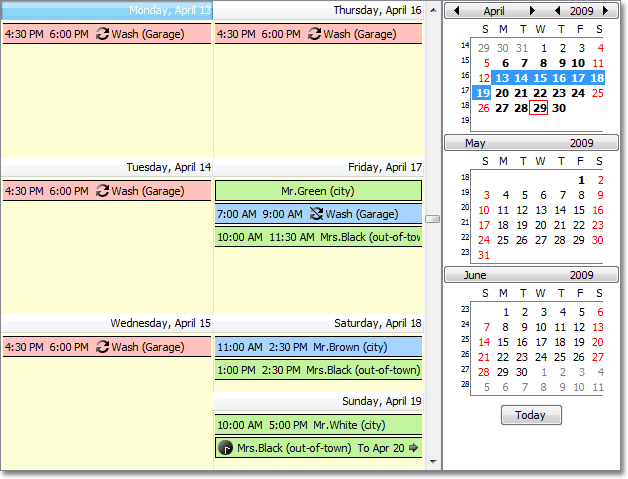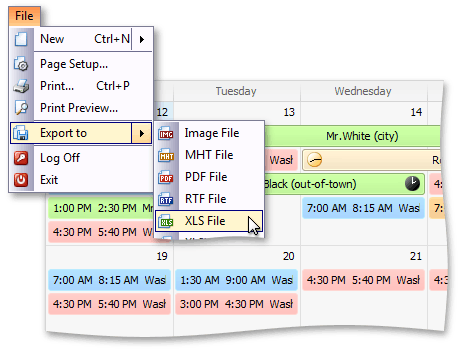SchedulerListEditor Class
Represents the Scheduling List Editor used in the XAF Windows Forms applications.
Namespace: DevExpress.ExpressApp.Scheduler.Win
Assembly: DevExpress.ExpressApp.Scheduler.Win.v24.1.dll
NuGet Package: DevExpress.ExpressApp.Scheduler.Win
Declaration
Remarks
List Editors are used by List Views to display object collections in a UI. The SchedulerListEditor is implemented in the Scheduler module, and is designed to present and manage scheduling information:

To display object collections, the XafSchedulerControl is used as the underlying control. The XafSchedulerControl is a descendant of the SchedulerControl class.
The SchedulerListEditor supports a range of features out of the box:
This List Editor has a Date Navigator which provides a quick and easy way to change the dates in the scheduling area:

The Date Navigator can be accessed using the SchedulerListEditor.DateNavigator property.
Implements the IExportable interface - can be exported with the ExportController and printed using the PrintingController:


As a descendant of the SchedulerListEditorBase, the SchedulerListEditor implements the IControlOrderProvider interface and supports the RecordsNavigationController‘s PreviousObject and NextObject Actions:

- Supports Resources and Recurring Events.
The SchedulerListEditor is targeted for objects that implement the IEvent interface from the Business Class Library.
For a thorough explanation of how to work with the SchedulerListEditor, refer to the Scheduler Module topic.
Note
SchedulerListEditor does not support Server, ServerView, InstantFeedback, and InstantFeedbackView mode (CollectionSourceBase.DataAccessMode).
Tip
Due to the XAF core specificity, it is not allowed to create objects directly from a nested List View of a Many-to-Many related object. This limitation becomes significant for the Scheduler when you try to edit an occurrence of series through a Scheduler Control of a Resource (assuming the Resource Detail View is invoked through an Event Detail View and the occurrence was not previously edited). Information about an exception from a recurrent event is stored in a separate IEvent object so a new object is created when you click the “Edit this occurrence” menu item for the first time. The internal code of the SchedulerListEditor uses the NewObjectViewController.NewObjectAction to create a new object. This action is hidden from the UI in the circumstances described above.